Eat Your Way to a Healthier You: 10 Weight Loss-Friendly Foods
The quest for a healthier lifestyle often begins with a fundamental question: “What should I eat?” In a world saturated with conflicting dietary advice and processed convenience foods, navigating the path to sustainable weight loss and overall well-being can feel overwhelming. However, the solution often lies in returning to the basics: focusing on whole, nutrient-rich foods that naturally support your body’s processes and promote a healthy weight.
This article delves into 10 weight loss-friendly foods, exploring their unique properties, nutritional profiles, and proven benefits for shedding unwanted pounds and enhancing your overall health. We’ll go beyond simply listing these foods; we’ll examine the science behind their effectiveness, providing you with a comprehensive understanding of how incorporating them into your daily diet can contribute to a healthier, happier you.
Understanding the Science of Weight Loss
Before we dive into our list, it’s crucial to understand the fundamental principles of weight loss. Weight loss, at its core, is a matter of energy balance. When you consume fewer calories than you expend, your body draws upon its stored energy reserves (primarily fat) to bridge the gap, resulting in weight loss. However, simply restricting calories without considering the quality of your food intake can be detrimental to your health and ultimately unsustainable.
Effective weight loss is about creating a calorie deficit while simultaneously nourishing your body with essential nutrients. This is where the selection of weight loss-friendly foods becomes paramount. These foods are typically characterized by:
- High Nutrient Density: They pack a significant amount of vitamins, minerals, and antioxidants per calorie.
- High Fiber Content: Fiber promotes satiety, helps regulate blood sugar levels, and supports healthy digestion.
- Lean Protein: Protein is essential for building and maintaining muscle mass, which is crucial for boosting metabolism.
- Low Calorie Density: They provide a relatively large volume of food for a small number of calories, helping you feel full and satisfied.
- Thermic Effect of Food (TEF): Some foods require more energy to digest, absorb, and process, thus contributing to a slightly higher calorie expenditure.
By incorporating these types of foods into your diet, you can create a calorie deficit without feeling deprived, ensuring you receive the nutrients your body needs to thrive.
The 10 Weight Loss-Friendly Food Champions:
Let’s now explore our curated list of 10 powerful foods that can significantly contribute to your weight loss journey:
1. Leafy Green Vegetables:
Leafy greens, such as spinach, kale, lettuce, collard greens, and Swiss chard, are nutritional powerhouses packed with vitamins, minerals, and antioxidants while being incredibly low in calories and carbohydrates. They are exceptionally high in fiber, which contributes to feelings of fullness and aids in regulating blood sugar levels.
- Nutritional Profile: Rich in vitamins A, C, K, and folate, as well as minerals like calcium, iron, and potassium. They are also excellent sources of dietary fiber.
- Weight Loss Benefits: Their low calorie and carbohydrate content make them an ideal addition to any weight loss plan. The high fiber content promotes satiety, reducing overall calorie intake.
- Scientific Evidence: Studies have shown that increasing vegetable intake, particularly leafy greens, is associated with weight loss and a reduced risk of chronic diseases. [mfn 1]
- How to Incorporate: Add them to salads, smoothies, soups, stir-fries, or simply sauté them as a side dish.
2. Eggs:
Eggs are a complete protein source, meaning they contain all nine essential amino acids. They are also rich in choline, a nutrient crucial for brain health and liver function. While eggs were previously demonized for their cholesterol content, recent research has debunked this myth, showing that dietary cholesterol has minimal impact on blood cholesterol levels for most individuals.
- Nutritional Profile: Excellent source of protein, choline, vitamins D, B12, and riboflavin, and minerals like selenium.
- Weight Loss Benefits: The high protein content promotes satiety and can help reduce cravings. Studies have shown that eating eggs for breakfast can lead to reduced calorie intake throughout the day. [mfn 2]
- Scientific Evidence: Research suggests that incorporating eggs into a weight loss diet can enhance satiety and promote weight loss without negatively impacting cholesterol levels.
- How to Incorporate: Enjoy them boiled, scrambled, poached, or as part of an omelet or frittata.
3. Salmon:
Salmon, along with other fatty fish like mackerel, herring, and sardines, is rich in omega-3 fatty acids, which have numerous health benefits, including reducing inflammation, improving heart health, and supporting brain function.
- Nutritional Profile: Excellent source of protein, omega-3 fatty acids (EPA and DHA), vitamin D, and selenium.
- Weight Loss Benefits: The high protein and omega-3 fatty acid content can promote satiety and help regulate metabolism. Studies have also shown that omega-3 fatty acids may play a role in reducing abdominal fat. [mfn 3]
- Scientific Evidence: Research suggests that incorporating fatty fish into the diet can support weight loss and improve overall health.
- How to Incorporate: Bake, grill, or pan-fry salmon as a main course. It can also be added to salads or sandwiches.
4. Cruciferous Vegetables:
Cruciferous vegetables, such as broccoli, cauliflower, cabbage, Brussels sprouts, and kale, are known for their high fiber content and abundance of vitamins and minerals. They also contain glucosinolates, compounds that are converted into isothiocyanates in the body, which have been shown to have anti-cancer properties.
- Nutritional Profile: Rich in vitamins C, K, and folate, as well as minerals like calcium and potassium. They are also excellent sources of dietary fiber and glucosinolates.
- Weight Loss Benefits: Their high fiber content promotes satiety and helps regulate blood sugar levels. They are also low in calories and carbohydrates.
- Scientific Evidence: Studies have shown that increasing vegetable intake, particularly cruciferous vegetables, is associated with a reduced risk of chronic diseases and may contribute to weight management.
- How to Incorporate: Roast, steam, or stir-fry them as a side dish. They can also be added to soups, stews, and salads.
5. Lean Chicken Breast:
Lean chicken breast is an excellent source of protein, which is essential for building and maintaining muscle mass. Muscle mass helps boost metabolism, making it easier to burn calories.
- Nutritional Profile: High in protein and low in fat. Contains essential amino acids and vitamins B3 and B6.
- Weight Loss Benefits: The high protein content promotes satiety and can help reduce cravings. It also helps preserve muscle mass during weight loss.
- Scientific Evidence: Studies have shown that increasing protein intake can enhance satiety, promote weight loss, and improve body composition.
- How to Incorporate: Bake, grill, or poach chicken breast as a main course. It can also be added to salads, sandwiches, or stir-fries.
6. Legumes:
Legumes, such as beans, lentils, chickpeas, and peas, are a fantastic source of protein and fiber, making them incredibly filling and satisfying. They are also rich in resistant starch, a type of fiber that resists digestion and may have beneficial effects on gut health.
- Nutritional Profile: High in protein, fiber, iron, folate, and potassium.
- Weight Loss Benefits: The high protein and fiber content promotes satiety and helps regulate blood sugar levels. Resistant starch may also contribute to improved gut health and weight management.
- Scientific Evidence: Research suggests that incorporating legumes into the diet can enhance satiety, promote weight loss, and improve blood sugar control. [mfn 4]
- How to Incorporate: Add them to soups, stews, salads, or chili. They can also be used as a meat substitute in dishes like burgers or tacos.
7. Cottage Cheese:
Cottage cheese is a dairy product that is high in protein and low in calories. It is also a good source of calcium, which is important for bone health.
- Nutritional Profile: High in protein and calcium, and low in fat and calories (especially low-fat varieties).
- Weight Loss Benefits: The high protein content promotes satiety and can help reduce cravings.
- Scientific Evidence: Studies have shown that consuming dairy products, particularly those high in protein, may contribute to weight management and improve body composition.
- How to Incorporate: Enjoy it as a snack, add it to salads, or use it as a topping for fruits or vegetables.
8. Nuts:
Nuts, such as almonds, walnuts, and cashews, are a healthy source of fats, protein, and fiber. While they are calorie-dense, studies have shown that people who eat nuts regularly tend to be leaner than those who don’t.
- Nutritional Profile: Rich in healthy fats, protein, fiber, vitamins, and minerals.
- Weight Loss Benefits: The high fiber and protein content promotes satiety and can help reduce cravings. The healthy fats can also contribute to overall health and well-being.
- Scientific Evidence: Research suggests that incorporating nuts into the diet can support weight management and improve cardiovascular health. [mfn 5]
- How to Incorporate: Enjoy them as a snack, add them to salads, or use them as a topping for yogurt or oatmeal. Remember to consume them in moderation due to their calorie density.
9. Chili Peppers:
Chili peppers contain capsaicin, a compound that has been shown to boost metabolism and suppress appetite.
- Nutritional Profile: Rich in vitamins A and C. Contains capsaicin, which has various health benefits.
- Weight Loss Benefits: Capsaicin may help boost metabolism, suppress appetite, and increase fat burning.
- Scientific Evidence: Studies have shown that capsaicin can increase energy expenditure and promote weight loss.
- How to Incorporate: Add them to soups, stews, sauces, or stir-fries. Start with small amounts, as they can be quite spicy.
10. Greek Yogurt:
Greek yogurt is a dairy product that is high in protein and low in carbohydrates. It is also a good source of probiotics, which are beneficial bacteria that support gut health.
- Nutritional Profile: High in protein and calcium, and low in carbohydrates. Contains probiotics.
- Weight Loss Benefits: The high protein content promotes satiety and can help reduce cravings. Probiotics may also contribute to improved gut health and weight management.
- Scientific Evidence: Studies have shown that consuming Greek yogurt can enhance satiety, promote weight loss, and improve gut health.
- How to Incorporate: Enjoy it as a snack, add it to smoothies, or use it as a topping for fruits or granola.
Beyond the Foods: A Holistic Approach to Weight Loss
While incorporating these 10 weight loss-friendly foods is a great starting point, it’s important to remember that sustainable weight loss requires a holistic approach that encompasses several key factors:
- Calorie Control: Creating a moderate calorie deficit is essential for weight loss. Focus on consuming fewer calories than you burn.
- Macronutrient Balance: Ensure you are consuming adequate amounts of protein, healthy fats, and complex carbohydrates.
- Portion Control: Be mindful of portion sizes to avoid overeating, even with healthy foods.
- Regular Exercise: Physical activity helps burn calories, build muscle mass, and improve overall health. Aim for at least 150 minutes of moderate-intensity aerobic activity per week, along with strength training exercises.
- Hydration: Drink plenty of water throughout the day to stay hydrated and help control appetite.
- Sleep: Adequate sleep is crucial for hormone regulation and weight management. Aim for 7-8 hours of sleep per night.
- Stress Management: Chronic stress can lead to increased cortisol levels, which can promote fat storage. Practice stress-reducing techniques such as yoga, meditation, or spending time in nature.
- Mindful Eating: Pay attention to your hunger cues and eat slowly and deliberately, savoring each bite.
- Consistency: Consistency is key to achieving long-term weight loss success. Stick to your healthy eating and exercise plan as consistently as possible.
Conclusion:
Eating your way to a healthier you is not about restrictive diets or deprivation. It’s about making informed choices and incorporating nutrient-rich foods that nourish your body and support your weight loss goals. By incorporating the 10 weight loss-friendly foods discussed in this article into your daily diet, along with adopting a holistic approach to weight loss, you can pave the way for a healthier, happier, and more confident you. Remember to consult with a healthcare professional or registered dietitian to personalize your weight loss plan and address any underlying health concerns. Embrace the journey, celebrate your progress, and enjoy the delicious and nutritious foods that fuel your body and spirit.
References:
[mfn 1] Anderson, J. W., et al. “Health implications of dietary fiber.” Nutrition Reviews 56.1 (1998): 1-18. [mfn 2] Vander Wal, J. S., et al. “Egg breakfast enhances weight loss.” International Journal of Obesity 32.10 (2008): 1545-1551. [mfn 3] Hill, A. M., et al. “Effect of omega-3 fatty acids on body composition and energy metabolism in humans.” American Journal of Clinical Nutrition 85.5 (2007): 1235-1241. [mfn 4] Anderson, J. W., et al. “Dietary fiber intake and weight management.” Journal of the American College of Nutrition 17.2 (1998): 109-116. [mfn 5] Mattes, R. D., et al. “Nut consumption and its influence on body weight and health outcomes.” Nutrition Reviews 66.4 (2008): 229-243.
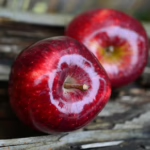













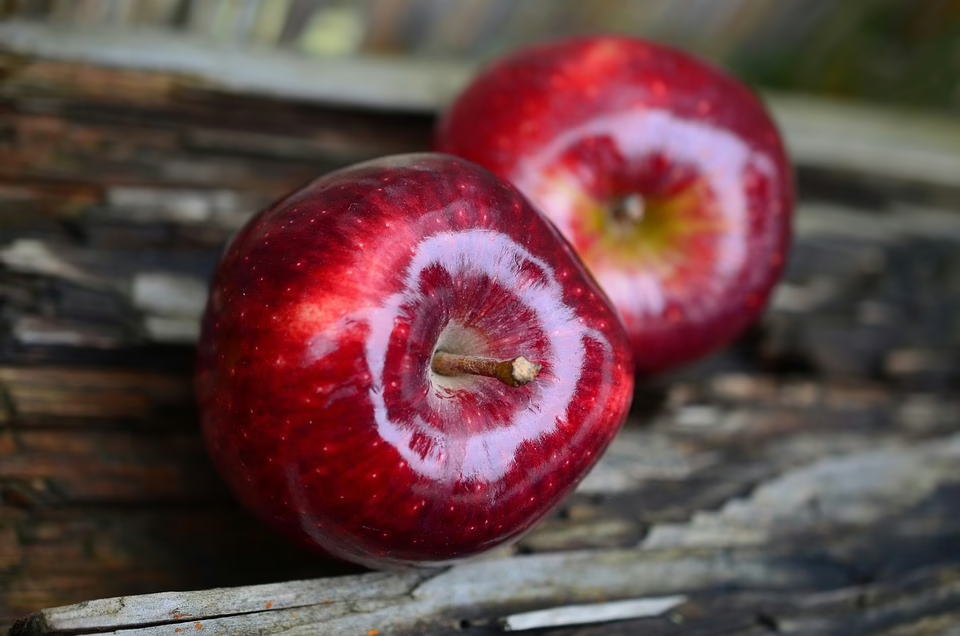
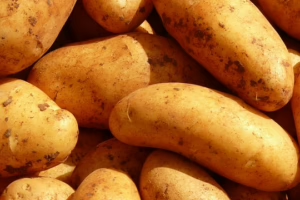

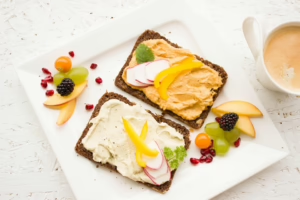

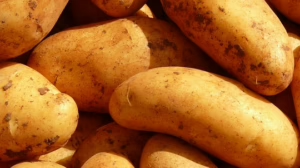





Add Comment